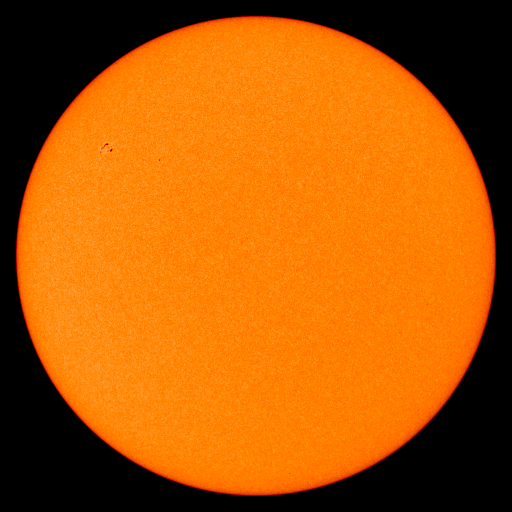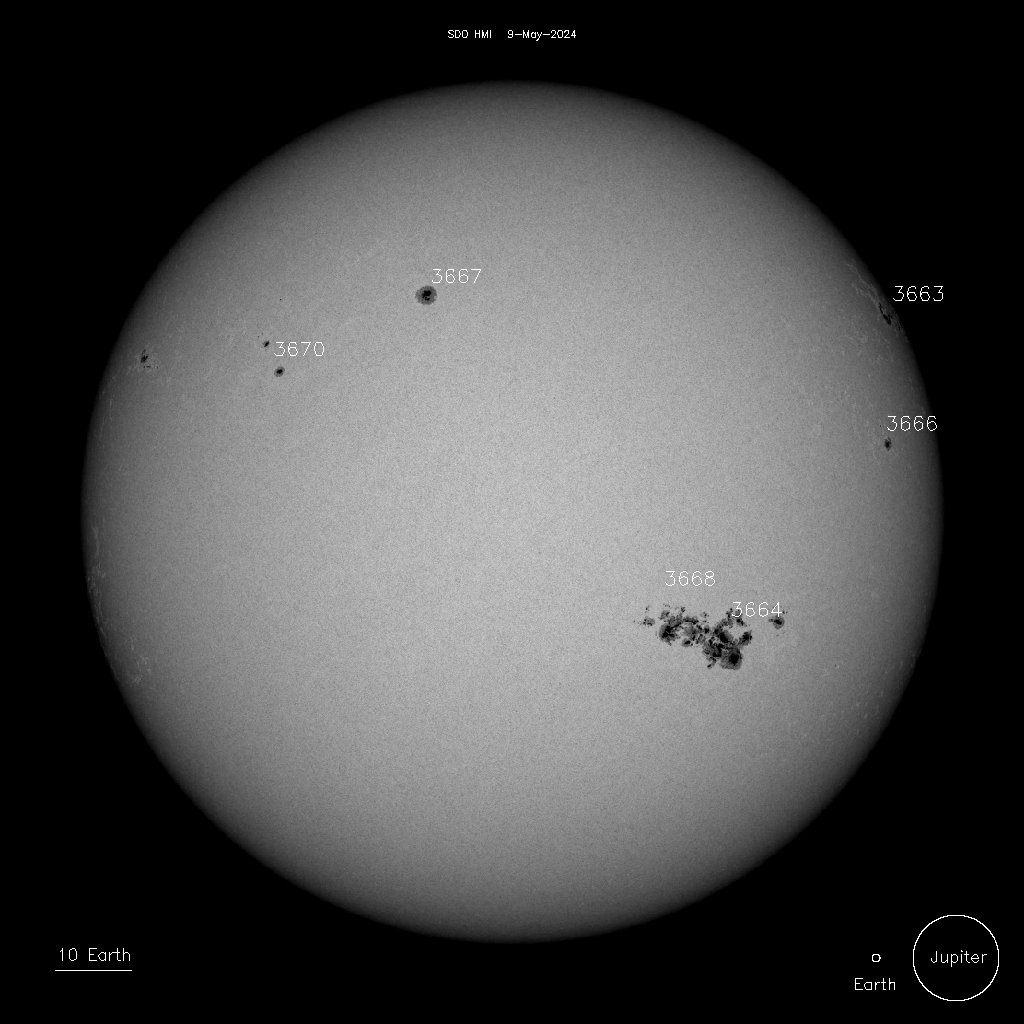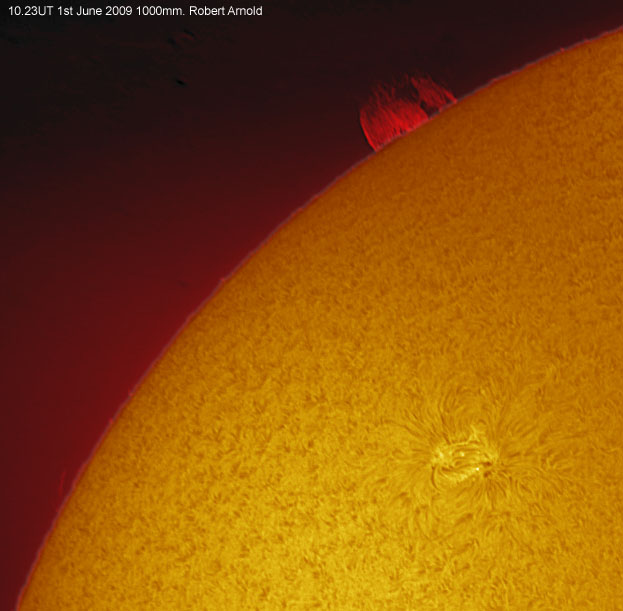Now do we have our spots back?
With bonus pretty pictures.
You'd think after my last debacle of prematurely pronouncing the reappearance of sunspots I'd have learned...
but, is it, could it be...?
looks like a small complex of spots in the upper left quadrant...
there are associated emission lines, but today's magnetogram is not up yet

yup
is calling it, spot 1019, member of new solar cycle 24
more pics at spaceweather.com 01/06/09
including this, rather cool one:

Sunspot 1019 and International Space Station transit, at the same time! (click to embiggen)
from Chris Newsome
Looks like Cycle 24 is finally on, though experts currently, boldly predict activity will be below average.
We'll see how it goes.
h/t Ahcuah
PS: the proposals for this:
ROSES-09 Amendment 1: New proposal opportunity in Appendix B.9: Causes and Consequences of the Minimum of Solar Cycle 23
This amendment establishes a new program element in Appendix B.9 entitled "Causes and Consequences of the Minimum of Solar Cycle 23." This new program element solicits proposals to study the causes and consequences of the minimum of Solar Cycle 23. Proposals are encouraged that take advantage of this opportunity with studies of domains ranging from the center of the Sun through terrestrial and planetary space environments to the boundary of the heliosphere. High priority will be given to studies addressing the interaction between various regimes.
are due on friday.
I wonder if they are going ahead.


